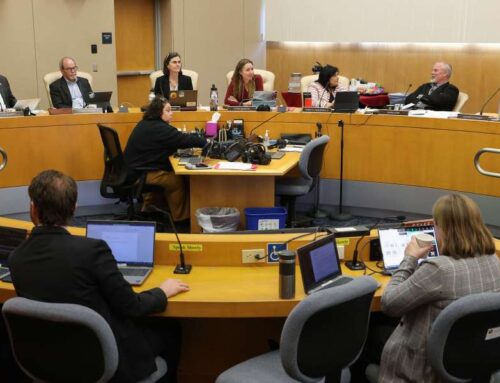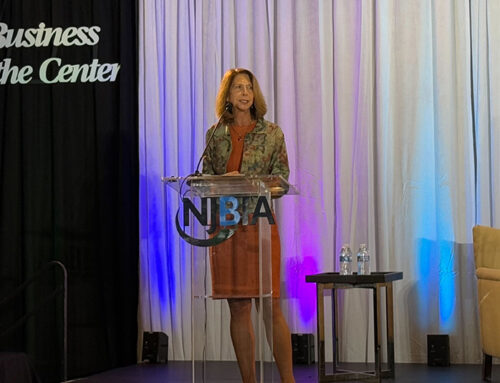From insects to mammals, the ASU Biocollections have it all — and are growing
October 29, 2025
Hojun Song has dedicated over two decades to studying locusts, grasshoppers, crickets and katydids — those jumping insects that most people would struggle to tell apart. But as the new director of the ASU Biocollections, Song is ready to step away from his comfort zone.
“I thought I would spend all my life studying grasshoppers,” Song says, laughing. “But I’m actually excited that I can expand and work on other things.”
It won’t be hard to find new research interests at the Biocollections, which house nearly 4 million specimens and counting, one of the fastest-growing natural history collections in the country.
The building, south of Tempe campus, is filled with creatures of all shapes and sizes: weevils the size of a fingernail, flat neon-green patches of lichen, even a taxidermied moose.
Having access to such a massive variety of preserved specimens gives ASU scientists myriad research opportunities and gives students the chance to get hands-on experience learning about creatures from every corner of the world.
“This is a really valuable resource,” Song says, “not only for conserving biodiversity, but it could be a really good place to train the next generation of scientists.”
And he has ambitious plans to expand the collections and establish them as an integral part of biological research in the U.S.
“This amazing place just has a lot of potential,” Song says. “It can grow to be a really important and nationally recognized resource.”

ASU photo
The call of the grasshoppers
Song moved from South Korea to the U.S. when he was 17 years old to follow his passion.
“I’ve always been fascinated with insects. I have a picture of myself, actually, holding a net with my little brother, collecting when I was a 5-year-old,” he says. “I guess I never grew out of it.”
He started out studying beetles at Cornell but got hooked on grasshoppers when he came across a picture of a swarm of locusts, which can gather in the millions, decimating subsistence farming in North Africa to the point of causing economic turmoil and famine.
Song was stunned by the sheer abundance of the insects: “I had never seen anything like it.”
He switched to studying grasshopper evolution as a graduate student at Ohio State University. Then, as a postdoctoral researcher at Brigham Young University, he had his first international field research experience collecting grasshoppers and katydids in the hot and humid rainforests of Papua New Guinea.
The experience was transformative for Song.
“Everything I touched was something I’d never seen before,” he said. “After I came back from that trip, I was like, ‘How do I do this more often?’”
Since then, Song has collected jumping insects all over the world — from Australia to Cameroon to Costa Rica. He even once rented helicopters to spend a week looking for new species of grasshoppers at the top of unclimbable 9,000-foot cliffs in South Africa.
In between those adventures, Song was also busy establishing himself as one of the premier grasshopper researchers in the world. When he was a graduate student, few university researchers studied grasshoppers, he says.
“So when I finally got my faculty position, I decided that I want to … train the next generation of scientists who study grasshoppers and katydids and crickets. I’ve been running my lab for 15 years, and every single one of my students are now experts.”
ASU’s unique collections
The choice to direct the ASU Biocollections was personal for Song, who spent much of his academic career using biological collections for his research: “I feel at home in the collections.”
He was particularly drawn to ASU’s collections because they are home to the NEON Biorepository, which vouchers all the specimens collected by the National Ecological Observatory Network, or NEON, a national program supported by the National Science Foundation that has been cataloguing and monitoring the biodiversity and ecological changes of 81 field sites around the country to create long-term datasets.
Those datasets will keep a record of current environmental conditions across the U.S. and allow researchers to see how those conditions change over time — an especially important mission amid climate change and rising rates of biodiversity loss.
ASU is poised to construct a new wing of the Biocollections building specifically to house NEON samples for the next 30 years. Song believes that ASU’s role in housing those samples and making them accessible will elevate its importance to ecologists, biodiversity scientists and conservationists around the country.
Song says he was also excited to come to ASU because of his prior connection with the university’s Global Locust Initiative.
In 2020, with the help of Arianne Cease, director of the Global Locust Initiative, Song earned a $12.5 million NSF grant to create a virtual research institute supporting interdisciplinary research around locusts, which are genetically unique as well as socially and politically important.
By joining forces with the initiative, Song hopes that ASU can become the best place to conduct locust research. Specifically, he aims to create a large locust laboratory in the main campus, adjacent to the Global Locust Initiative, which will allow scientists to conduct behavioral research with tens of thousands of locusts at a time — something they rarely have the space for.
Before tackling those larger projects, though, Song’s first goal as the new director is simple: making the Biocollections more visible to the larger ASU community and beyond.
“A lot of people still don’t know that we have this amazing resource at ASU,” Song says.
“We want people to come visit more — scientists, the public — and we want this place to be used more. We have the capacity to do amazing things, so we want to do them.”
Search
RECENT PRESS RELEASES
Related Post






